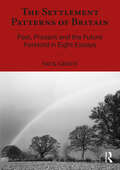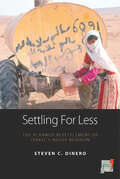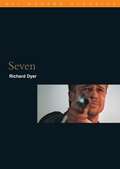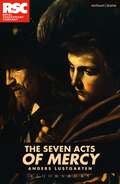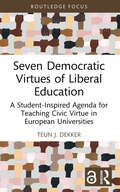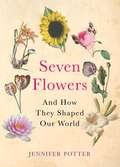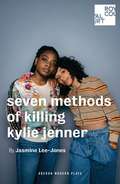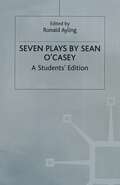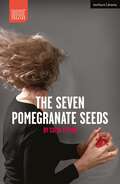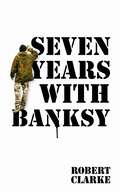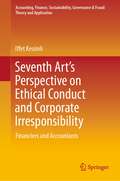- Table View
- List View
The Settlement Patterns of Britain: Past, Present and the Future Foretold in Eight Essays (Planning, History and Environment Series)
by Nick GreenIn writing The Settlement Patterns of Britain Nick Green was inspired by the short story genre. His book is a collection of eight non-fiction short stories or essays, where the characters are the places, some of which appear more than once, usually as bit-part players, occasionally as the main protagonist. Preceded by a prologue describing Britain’s prehistory as a European peninsula, each essay covers a fixed period in the history of the development of Britain’s settlement patterns, sometimes long, more often quite short, beginning around 2,500 BC and ending about one hundred years in the future. Nick Green chose those periods that are particularly instructive in revealing how settlement patterns come to exist in the form they do and how they might develop in the future. Settlement patterns are not just about where a place is, but about how that place relates to others. They wax and wane with circumstance, and around each settlement’s fixed core, the patterns of living and working shift constantly, driven by forces beyond the control of any individual town or city or village. From Bronze Age communities to computer simulations, from the mediaeval wool trade to the hyper-networked society, from Viking invasions to the post-industrial era, the essays cover a broad sweep of history. They appear in chronological order, but are not intended to provide a continuous, linear historical narrative – nor do they: each essay is freestanding so they can be read in whatever order the reader prefers.
The Settlement Patterns of Britain: Past, Present and the Future Foretold in Eight Essays (Planning, History and Environment Series)
by Nick GreenIn writing The Settlement Patterns of Britain Nick Green was inspired by the short story genre. His book is a collection of eight non-fiction short stories or essays, where the characters are the places, some of which appear more than once, usually as bit-part players, occasionally as the main protagonist. Preceded by a prologue describing Britain’s prehistory as a European peninsula, each essay covers a fixed period in the history of the development of Britain’s settlement patterns, sometimes long, more often quite short, beginning around 2,500 BC and ending about one hundred years in the future. Nick Green chose those periods that are particularly instructive in revealing how settlement patterns come to exist in the form they do and how they might develop in the future. Settlement patterns are not just about where a place is, but about how that place relates to others. They wax and wane with circumstance, and around each settlement’s fixed core, the patterns of living and working shift constantly, driven by forces beyond the control of any individual town or city or village. From Bronze Age communities to computer simulations, from the mediaeval wool trade to the hyper-networked society, from Viking invasions to the post-industrial era, the essays cover a broad sweep of history. They appear in chronological order, but are not intended to provide a continuous, linear historical narrative – nor do they: each essay is freestanding so they can be read in whatever order the reader prefers.
Settling for Less: The Planned Resettlement of Israel's Negev Bedouin (Space and Place #3)
by Steven C. DineroThe resettlement of the Negev Bedouin (Israel) has been wrought with controversy since its inception in the 1960s. Presenting evidence from a two-decade period, the author addresses how the changes that took place over the past sixty to seventy years have served the needs and interests of the State rather than those of Bedouin community at large. While town living fostered improvements in social and economic development, numerous unintended consequences jeopardized the success of this planning initiative. As a result, the Bedouin community endured excessive hardship and rapid change, abandoning its nomadic lifestyle and traditions in response to the economic, political, and social pressure from the State—and received very little in return.
Settling for Less: The Planned Resettlement of Israel's Negev Bedouin (Space and Place #3)
by Steven C. DineroThe resettlement of the Negev Bedouin (Israel) has been wrought with controversy since its inception in the 1960s. Presenting evidence from a two-decade period, the author addresses how the changes that took place over the past sixty to seventy years have served the needs and interests of the State rather than those of Bedouin community at large. While town living fostered improvements in social and economic development, numerous unintended consequences jeopardized the success of this planning initiative. As a result, the Bedouin community endured excessive hardship and rapid change, abandoning its nomadic lifestyle and traditions in response to the economic, political, and social pressure from the State—and received very little in return.
Seven (BFI Film Classics)
by Richard DyerGluttony, Greed, Sloth, Lust, Pride, Envy, Wrath. A serial killer on a warped mission who turns his victims' 'sins' into the means of their murder. Seven (David Fincher, 1995) is one of the most acclaimed American films of the 1990s. Starring Morgan Freeman, Brad Pitt, and Kevin Spacey, Seven is the darkest of films. In it performance, cinematography, sound, and plot combine to create a harrowing account of a world beset by an all-encompassing, irremediable wickedness. Richard Dyer explores the film in terms of of sin, story, structure, seriality, sound, sight and salvation, analyzing how Seven both epitomizes and modifies the serial killer genre, which is such a feature of recent cinema.
Seven: Smew's Greed (BFI Film Classics)
by Richard DyerGluttony, Greed, Sloth, Lust, Pride, Envy, Wrath. A serial killer on a warped mission who turns his victims' 'sins' into the means of their murder. Seven (David Fincher, 1995) is one of the most acclaimed American films of the 1990s. Starring Morgan Freeman, Brad Pitt, and Kevin Spacey, Seven is the darkest of films. In it performance, cinematography, sound, and plot combine to create a harrowing account of a world beset by an all-encompassing, irremediable wickedness. Richard Dyer explores the film in terms of of sin, story, structure, seriality, sound, sight and salvation, analyzing how Seven both epitomizes and modifies the serial killer genre, which is such a feature of recent cinema.
The Seven Acts of Mercy (Modern Plays)
by Anders LustgartenYou have to be tough to be kind. That's what I've learned from you, Granddad. Tough and fearless and strong. So that's what I'm going to be.Naples, 1606. Inside an unfinished church, a painting is emerging from the darkness. The Seven Acts of Mercy is Caravaggio's masterpiece - and his first painting since he killed a man and fled Rome. As the artist works, he is fueled by anger, self-loathing and his driving need to create a work that speaks of compassion in a violent world. Bootle, the present day. A retired dock worker teaches his grandson, as around them a community is disintegrating under the pressure of years of economic and political degradation. With all he has left, a book of great works of art, he tries to open the boy's eyes to the tragedy and beauty of the life he faces. And the boy reciprocates in the only way he knows.Playing out across a gap of 400 years, Anders Lustgarten's visceral play confronts the dangerous necessity of compassion, in a world where it is in short supply. The Seven Acts of Mercy received its world premiere at the Swan Theatre, RSC, on 24 November 2016.
The Seven Acts of Mercy (Modern Plays)
by Anders LustgartenYou have to be tough to be kind. That's what I've learned from you, Granddad. Tough and fearless and strong. So that's what I'm going to be.Naples, 1606. Inside an unfinished church, a painting is emerging from the darkness. The Seven Acts of Mercy is Caravaggio's masterpiece - and his first painting since he killed a man and fled Rome. As the artist works, he is fueled by anger, self-loathing and his driving need to create a work that speaks of compassion in a violent world. Bootle, the present day. A retired dock worker teaches his grandson, as around them a community is disintegrating under the pressure of years of economic and political degradation. With all he has left, a book of great works of art, he tries to open the boy's eyes to the tragedy and beauty of the life he faces. And the boy reciprocates in the only way he knows.Playing out across a gap of 400 years, Anders Lustgarten's visceral play confronts the dangerous necessity of compassion, in a world where it is in short supply. The Seven Acts of Mercy received its world premiere at the Swan Theatre, RSC, on 24 November 2016.
Seven Days Of Possibilities: One Teacher, 24 Kids, and the Music That Changed Their Lives Forever
by Anemona HartocollisJohanna Grussner arrived in New York City starry-eyed. She was a young Finnish jazz singer looking for the big time. But it was hard to find steady gigs. Propelled by pluck, determination, and a smidgen of desperation, she obtained a job teaching music at P.S. 86, a public school in the Bronx. At first, it was just to pay the bills. But over the course of several years, Johanna formed an intense, transformative connection with her students. She helped turn them from tough, angry, street-smart city kids into a disciplined, technically proficient, soaringly beautiful gospel chorus. Johanna came to identify so strongly with her students that she eventually took them to her hometown in rural Finland, to meet her family and friends, to perform in a gospel concert, and to show them what an alternate childhood-one of tiny schools, quiet classrooms, fresh air, wholesome meals, and endless music-could be like.Seven Days of Possibilities offers an inside look at the politics, history, and complex personal relationships that govern one typical New York City public school. But more importantly, it is the story of how one person can make a difference against those odds, rising above corruption, indifference and regimentation with hope, music, and love.
Seven Democratic Virtues of Liberal Education: A Student-Inspired Agenda for Teaching Civic Virtue in European Universities (Routledge Research in Character and Virtue Education)
by Teun J. DekkerThis book argues that the liberal arts and sciences (LAS) model of education can inspire reform across higher education to help students acquire crucial civic virtues. Based on interviews with 59 students from LAS programmes across Europe, the book posits that LAS education can develop a range of citizenship skills that are central to the democratic process. The interviews provide insight into how studying LAS prepares students for citizenship by asking them to reflect on their education, what it taught them, and how it did so. Building on these insights, seven key democratic competencies are identified and linked to concrete educational practices that foster them, leading to an agenda for higher education reform. Ultimately arguing for making the teaching of civic virtue a more central part of university education in Europe, this book will appeal to researchers, educators, and politicians with an interest in education policy, philosophy of education, and democratic theory, as well as concerned citizens.
Seven Democratic Virtues of Liberal Education: A Student-Inspired Agenda for Teaching Civic Virtue in European Universities (Routledge Research in Character and Virtue Education)
by Teun J. DekkerThis book argues that the liberal arts and sciences (LAS) model of education can inspire reform across higher education to help students acquire crucial civic virtues. Based on interviews with 59 students from LAS programmes across Europe, the book posits that LAS education can develop a range of citizenship skills that are central to the democratic process. The interviews provide insight into how studying LAS prepares students for citizenship by asking them to reflect on their education, what it taught them, and how it did so. Building on these insights, seven key democratic competencies are identified and linked to concrete educational practices that foster them, leading to an agenda for higher education reform. Ultimately arguing for making the teaching of civic virtue a more central part of university education in Europe, this book will appeal to researchers, educators, and politicians with an interest in education policy, philosophy of education, and democratic theory, as well as concerned citizens.
Seven Flowers: SHORTLISTED FOR THE GARDEN MEDIA AWARDS
by Jennifer Potter**SHORTLISTED FOR THE GARDEN MEDIA AWARDS, INSPIRATIONAL BOOK OF THE YEAR**The lotus, lily, sunflower, opium poppy, rose, tulip and orchid. Seven flowers: seven stories full of surprise and secrets. Where and when did these flowers originate? What is the nature of their power and how was it acquired? What use has been made of them in gardens, literature and art? These are both histories and detective stories, full of incident, unexpected revelations, and irony. The opium poppy, for example, returned to haunt its progenitors in the West; and while Confucius saw virtue and modesty in his native orchids, the ancient Greeks saw only sex.These are flowers of life and death; of purity and passion; of greed, envy and virtue; of hope and consolation; of the beauty that drives men wild. All seven demonstrate the enduring ability of flowers to speak metaphorically - if we could only decode what they have to say.
The Seven Lamps of Architecture
by John RuskinIn August of 1848, John Ruskin and his new bride visited northern France, for the gifted young critic wished to write a work that would examine the essence of Gothic architecture. By the following April, the book was finished. Titled The Seven Lamps of Architecture, it was far more than a treatise on the Gothic style; instead, it elaborated Ruskin's deepest convictions of the nature and role of architecture and its aesthetics. The book was published to immediate acclaim and has since become an acknowledged classic. <p><p> The "seven lamps" are Sacrifice, Truth, Power, Beauty, Life, Memory, and Obedience. In delineating the relationship of these terms to architecture, Ruskin distinguishes between architecture and mere building. Architecture is an exalting discipline that must dignify and ennoble public life. It must preserve the purity of the materials it uses; and it must serve as a source of power and renewal for the society that produces it. The author expounds these and many other ideas with exceptional passion and knowledge, expressed in a masterly prose style. <p> Today, Ruskin's timeless observations are as relevant as they were in Victorian times, making The Seven Lamps of Architecture required reading for architects, students, and other lovers of architecture, who will find in these pages a thoughtful and inspiring approach to one of man's noblest endeavors. <p> This authoritative edition includes excellent reproductions of the 14 original plates of Ruskin's superb drawings of architectural details from such structures as the Doge's Palace in Venice, Giotto's Campanile in Florence, and the Cathedral of Rouen.
seven methods of killing kylie jenner (Oberon Modern Plays)
by Jasmine Lee-JonesIn this innovative play blending real life and online culture, a young Black woman takes to Twitter to voice her frustration with white women profiting off Black culture and stereotypes. When The Discourse turns on her, the line between internet personas and IRL relationships blurs, and the heightened scrutiny she comes under puts her real-life friendship under strain...seven methods of killing kylie jenner combines theatre with gifs, memes and emojis to explore stereotypes of Black womanhood, white capitalist exploitation, and the politics of social media activism.
Seven Plays By Sean O'casey: A Student's Edition
by Steven M. Studebaker Sean O'Casey Ronald AylingThis edition of Sean O'Casey's major plays is designed specifically for students and teachers. The plays are supported by a full introduction, covering O'Casey's career and critical responses to the plays, full notes and a bibliography.
The Seven Pomegranate Seeds (Modern Plays)
by Colin TeevanSeven contemporary stories grounded in prominent, mythical origins.Persephone, Hypsipyle, Medea, Alcestis, Phaedra, Creusa and Demeter: the women of Euripides' plays are reimagined as people of today in an unexpected fusion of celebrity, inappropriate desires, historical police investigations and missing children.A severed maternal bond threads each story together, charting a journey through rage and redemption, towards a compelling conclusion.This revised edition of Colin Teevan's haunting monologue cycle was published to coincide with a new production at Rose Theatre, Kingston, in November 2021.
The Seven Pomegranate Seeds (Modern Plays)
by Colin TeevanSeven contemporary stories grounded in prominent, mythical origins.Persephone, Hypsipyle, Medea, Alcestis, Phaedra, Creusa and Demeter: the women of Euripides' plays are reimagined as people of today in an unexpected fusion of celebrity, inappropriate desires, historical police investigations and missing children.A severed maternal bond threads each story together, charting a journey through rage and redemption, towards a compelling conclusion.This revised edition of Colin Teevan's haunting monologue cycle was published to coincide with a new production at Rose Theatre, Kingston, in November 2021.
Seven Samurai (BFI Film Classics)
by Joan MellenIn the film 'Seven Samurai' (1954) a whole society is on the verge of irrevocable change. Many people consider this film a major achievemnet in Japanese cinema, an epic that evokes the cultural upheaval brought on by the collapse of Japanese militarism in the 16th century, echoing the sweeping changes occuring in the aftermath of the American occupation. The plot is deceptively simple. A village of farmers is beset by a horde of bandits, and in desperation the village hire itinerant samurai to protect their crops and their village. In the end the samurai see off the bandits. Together the samurai reflect the ideals and values of a noble class near the point of extinction. The film may be a technical masterpiece, and despite its movement and violence it appears to be a lament for a lost nobility. In this book Mellen contextualizes 'Seven Samurai', marking its place in Japanese cinema, and in director, Akira Kurosawa's career. Mellen explores the film's roots in mediaeval history and the film's visual language.
Seven Samurai (BFI Film Classics)
by Joan MellenIn the film 'Seven Samurai' (1954) a whole society is on the verge of irrevocable change. Many people consider this film a major achievemnet in Japanese cinema, an epic that evokes the cultural upheaval brought on by the collapse of Japanese militarism in the 16th century, echoing the sweeping changes occuring in the aftermath of the American occupation. The plot is deceptively simple. A village of farmers is beset by a horde of bandits, and in desperation the village hire itinerant samurai to protect their crops and their village. In the end the samurai see off the bandits. Together the samurai reflect the ideals and values of a noble class near the point of extinction. The film may be a technical masterpiece, and despite its movement and violence it appears to be a lament for a lost nobility. In this book Mellen contextualizes 'Seven Samurai', marking its place in Japanese cinema, and in director, Akira Kurosawa's career. Mellen explores the film's roots in mediaeval history and the film's visual language.
Seven Samurai (BFI Film Classics)
by Joan MellenIn Seven Samurai (1954) a whole society is on the verge of irrevocable change. Akira Kurosawa's celebrated film, regarded by many to be the major achievement of Japanese cinema, is an epic that evokes the cultural upheavalbrought on by the collapse of Japanese militarism in the 16th century, but at the same time echoes also the sweeping cultural changes occurring in the aftermath of the American Occupation that followed Japan's defeat in the Second World War.The plot is deceptively simple. A village of farmers is beleaguered by a horde of bandits. In desperation, the farmers decide to hire itinerant samurai to protect their crops and people and defeat the bandits. There had never been a Japanese film in which peasants hired samurai, or an evocation of the social transformation that made such an idea credible.There are six samurai and one who is accepted as such. Together they reflect the ideals and values of a noble class near the point of extinction. Seven Samurai may be the greatest action film, a technical masterpiece unmatched in its depiction of movement and violence, but running beneath the sound and fury is a lament for a lost nobility, 'a dirge for the spirit of Japan,' writes Joan Mellen, 'which will never again be so strong.'Mellen's study contextualises Seven Samurai, marking its place in Japanese cinema and in Kurosawa's film-making career. She explores the film's roots in medieval history and, above all, the astonishing visual language in which Kurosawa created his elegiac epic.
Seven Samurai (BFI Film Classics)
by Joan MellenIn Seven Samurai (1954) a whole society is on the verge of irrevocable change. Akira Kurosawa's celebrated film, regarded by many to be the major achievement of Japanese cinema, is an epic that evokes the cultural upheavalbrought on by the collapse of Japanese militarism in the 16th century, but at the same time echoes also the sweeping cultural changes occurring in the aftermath of the American Occupation that followed Japan's defeat in the Second World War.The plot is deceptively simple. A village of farmers is beleaguered by a horde of bandits. In desperation, the farmers decide to hire itinerant samurai to protect their crops and people and defeat the bandits. There had never been a Japanese film in which peasants hired samurai, or an evocation of the social transformation that made such an idea credible.There are six samurai and one who is accepted as such. Together they reflect the ideals and values of a noble class near the point of extinction. Seven Samurai may be the greatest action film, a technical masterpiece unmatched in its depiction of movement and violence, but running beneath the sound and fury is a lament for a lost nobility, 'a dirge for the spirit of Japan,' writes Joan Mellen, 'which will never again be so strong.'Mellen's study contextualises Seven Samurai, marking its place in Japanese cinema and in Kurosawa's film-making career. She explores the film's roots in medieval history and, above all, the astonishing visual language in which Kurosawa created his elegiac epic.
Seven Years with Banksy
by Robert ClarkeSeven Years with Banksy is an illuminating memoir of the world's most celebrated graffiti artist, offering an insight into his life and work through the experiences that he and the author Robert Clarke shared together during Banksy's formative years. Clarke takes us through his first encounters with Banksy, which took place in a hotel in New York in the 1990s, and candidly describes how his friendship with this young English artist developed. Along the way, readers will discover more about the ever-mysterious Banksy - what makes him tick, why he does what he does, and why he ultimately rejects fame in favour of anonymity, setting him apart from many other popular artists of our time. This is the perfect read for any Banksy or modern-art fan.
Seventeenth-Century Science and the Arts
by Hedley Howell RhysWas there a continuity between the "vigorous art and the seminal science" of the seventeenth century? How did they affect one another? Which, if either, was dominant? Four distinguished scholars explore the relation between seventeenth century science and the creative arts in a series of four essays: Introduction, by Stephen E. Toulmin of Columbia; Science and Literature, by Douglas Bush of Harvard; Science and Visual Art, by James S. Ackerman of Harvard; and Scientific Empiricism in Musical Thought, by Claude V. Palisca of Yale.Originally published in 1961.The Princeton Legacy Library uses the latest print-on-demand technology to again make available previously out-of-print books from the distinguished backlist of Princeton University Press. These editions preserve the original texts of these important books while presenting them in durable paperback and hardcover editions. The goal of the Princeton Legacy Library is to vastly increase access to the rich scholarly heritage found in the thousands of books published by Princeton University Press since its founding in 1905.
Seventh Art’s Perspective on Ethical Conduct and Corporate Irresponsibility: Financiers and Accountants (Accounting, Finance, Sustainability, Governance & Fraud: Theory and Application)
by Iffet KesimliThis book discusses the possibility of corporate professionals—specifically accountants, bankers, and financiers—being influenced by the seventh art, i.e. cinema, and acting out fraudulent actions depicted in the cinematic world in the real life situations. It is widely known that real world scenarios influence cinema. Through a field study, this book evaluates if there is a reciprocal effect on events in the real world being impacted by scenarios depicted in movies. A questionnaire was designed in order to understand the perception of business ethics among above-mentioned professionals and if such a perception was formed or influenced due to observed behaviors from movies. The book concludes with an assessment of the power of visual art in affecting real world behaviors and outlines strategies for recognizing and preventing such behaviors leading to unethical conduct and corporate irresponsibility.
